How Mobile Command Centers Improve Coordination During Natural Disasters
When natural disasters strike, chaos and disruption follow. Traditional communication networks collapse, mobility becomes restricted, and...
8 min read
Craftsmen Industries Oct 30, 2025 7:43:23 AM
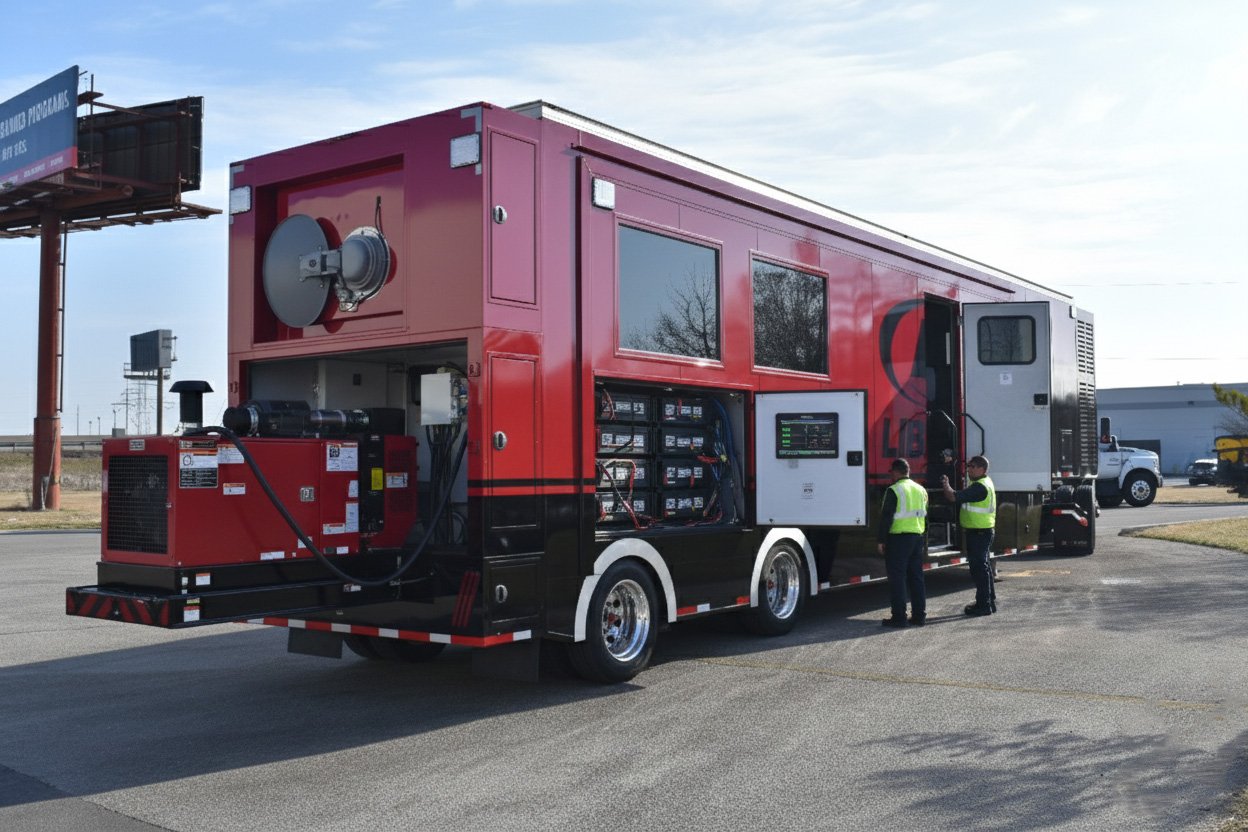
Mobile Command Centers (MCCs) are the backbone of emergency response, corporate field operations, and even large event security. They serve as mobile hubs where communication, coordination, and leadership decisions occur in real-time. But no matter how advanced the technology inside, giant video walls, encrypted radios, or satellite uplinks, all of it depends on reliable power.
According to the U.S. Department of Homeland Security, survivability and continuity are central to mobile command operations, requiring energy systems to match the resilience of fixed Emergency Operations Centers. This elevates power solutions from mere infrastructure components to essential lifelines for mission-critical mobile command centers.
That’s why MCCs are designed with layered, redundant power systems that can run continuously for days or even weeks. This blog covers all the necessary details about the power solutions for the continuous operations of MCCs. Let's discover them.
A single power source is never enough for a mobile command center. Redundancy is essential, which is why most MCCs rely on dual power systems, typically a generator paired with robust battery storage.
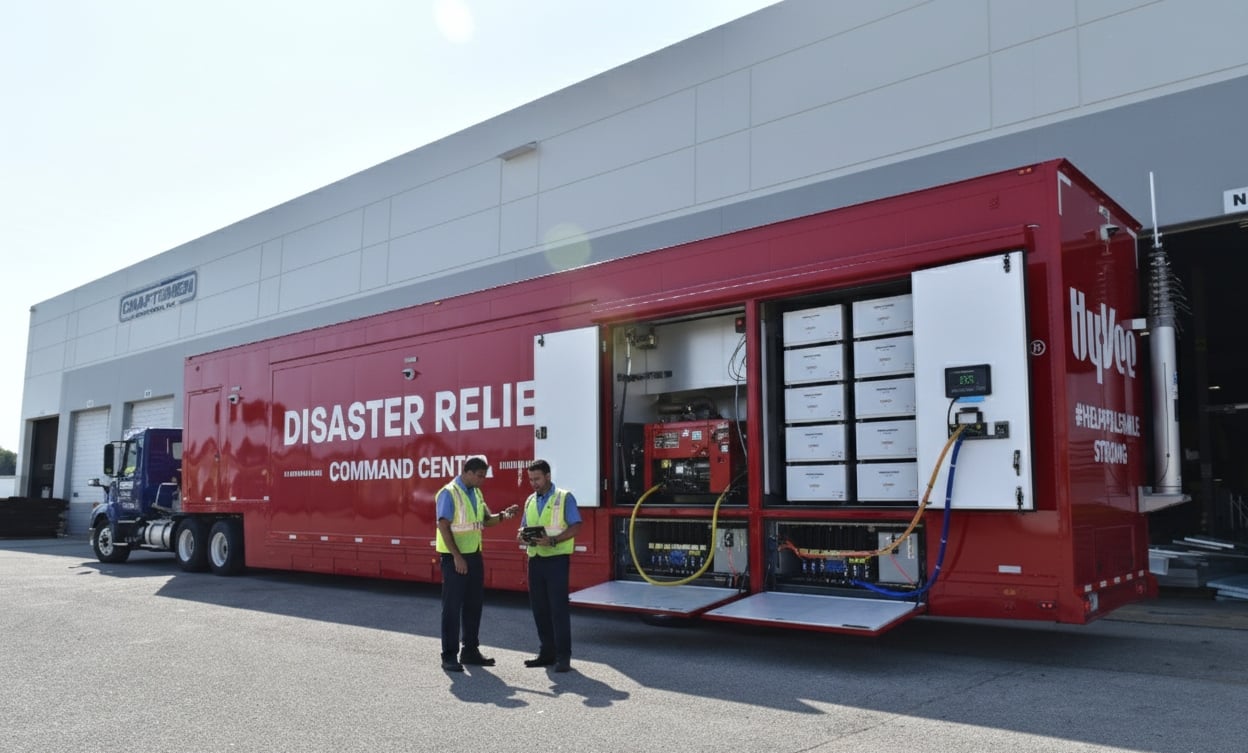
Generators are the backbone of MCC energy. They’re chosen based on the full electrical load of the unit, from HVAC and lighting to displays and radios. A mid-sized MCC might use a 20–50 kW generator, while larger units require much more. Fuel supply is critical: most MCCs carry enough for at least 24 hours of continuous operation, with protocols for rapid refueling in extended deployments. Noise reduction systems and emission controls are also factored in to avoid operational disruptions in sensitive environments.
Battery banks provide the crucial bridge between generator cycles. They allow MCCs to run in “quiet mode” during sensitive operations or when noise discipline is important. Modern lithium-ion batteries are lighter, faster to recharge, and more resilient than older systems. UPS systems keep computers, radios, and servers running smoothly, protecting against damaging power surges or drops. This balance between generators and batteries ensures continuous uptime with minimal interruptions.
Automatic transfer switches (ATS) act as the silent guardians of MCC power. The moment a generator stalls, the ATS flips power to batteries or shore power in seconds. This prevents outages in critical systems like communication networks, where even a few minutes of downtime could disrupt mission success.
No, they work as supplements. Batteries are best for bridging or quiet periods, while generators remain primary.
Sustainability is reshaping how MCCs are powered. With pressure to reduce emissions and noise pollution, renewable energy sources are now integrated into many designs.
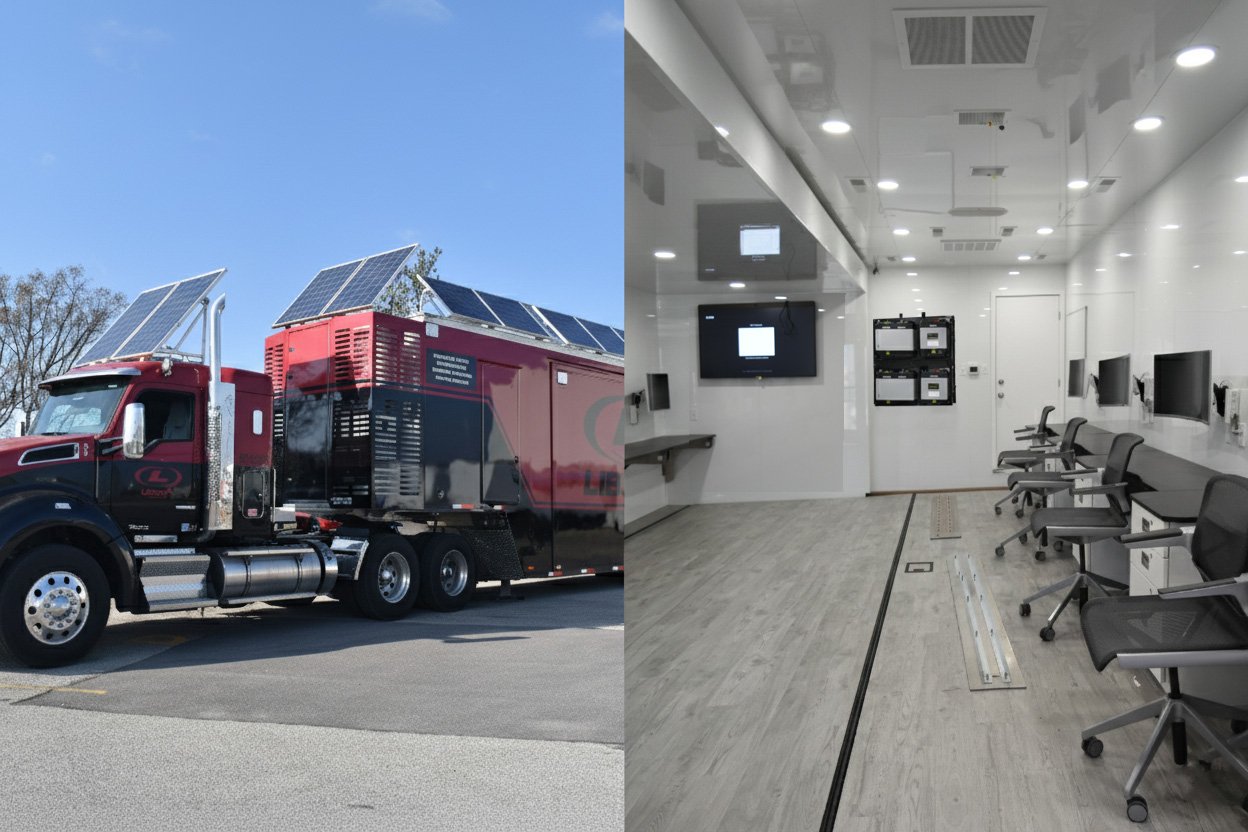
Solar panels are becoming common on MCC roofs and deployable racks. While they rarely provide full operational power, they significantly reduce generator runtime and fuel consumption. For instance, in sunny climates, solar can supply enough energy to handle lighting or charge smaller electronics, leaving the generator to focus on heavier loads.
Generators that meet EPA Tier 4 standards burn cleaner and operate more quietly. Hybrid systems combine these efficient generators with battery storage and renewable inputs, cutting both operational costs and emissions.
Lithium-ion and lithium-phosphate batteries are revolutionizing MCC energy storage. They charge faster, last longer, and operate efficiently in harsher climates. When paired with solar, they help stretch operational endurance significantly.
The U.S. Environmental Protection Agency highlights that hybrid and renewable solutions can lower lifecycle costs, while also keeping units compliant with federal environmental standards.
Typically 5–10 years, depending on usage cycles and climate.
Generating power is one thing, but distributing it wisely is equally critical. MCCs now come with smart power management systems that optimize load distribution.
Load Prioritization
Operators divide energy usage into critical and non-critical categories. Communications, lighting, and HVAC are considered mission-critical, while non-essential loads (like kitchen appliances or entertainment systems) can be shut down during shortages.
Dashboards display real-time consumption, making it easier to track usage and plan for conservation. Some systems even predict future demand spikes, helping teams plan fuel and battery use more effectively.
When MCCs are deployed near infrastructure, they can connect to local grids (shore power). This saves fuel, reduces wear on generators, and allows for quieter, more sustainable operations.
The Federal Energy Management Program (FEMP) stresses that smart load management is one of the best ways to ensure continuous mission capability while minimizing waste.
Many don’t realize how power-hungry support systems are inside an MCC.
Electronics can’t operate in extreme heat or cold, which makes HVAC essential. Efficient HVAC systems are now designed with variable-speed compressors, which only run at the capacity required, saving energy compared to older, constant-output models.
LED lighting has replaced traditional bulbs in nearly every MCC. They consume far less power and provide brighter, more reliable illumination. Motion sensors and dimmable lights further reduce unnecessary power draw.
Large video walls, satellite uplinks, and surveillance cameras are among the heaviest energy consumers. Designers are now using energy-efficient display panels and smart routers to ensure long runtimes without overloading generators.
Backup and failover systems are the safety net of a Mobile Command Center. They ensure that even if the main power source goes down, operations don’t miss a beat. Imagine a storm knocking out a generator, without backup, communications, lighting, and computers would instantly go dark. That’s why MCCs are designed with layered failover strategies that automatically or manually switch power sources.
Uninterruptible Power Supplies (UPS) provide a crucial buffer. They kick in immediately if power drops, keeping sensitive equipment like servers, radios, and medical devices online. Surge protection within these UPS units also shields electronics from sudden power spikes, which can otherwise fry critical systems.
When MCCs are stationed near utilities, they plug into shore power, essentially connecting to the local grid. This reduces reliance on onboard fuel and allows for longer deployments. Some MCCs also have provisions to connect to external microgrids or portable solar farms.
Automatic systems sense disruptions and switch instantly, but human operators still maintain manual overrides for complex scenarios. This combination of automation and human judgment ensures maximum reliability in high-stakes missions.
Mobile Command Centers don’t just need power; they need power that meets strict standards. These benchmarks ensure safety, efficiency, and environmental responsibility, especially when units operate in public spaces or alongside government agencies.
Generators are one of the biggest polluters in MCCs. The U.S. Environmental Protection Agency (EPA) enforces Tier 4 emission standards, which demand cleaner and quieter engines. Meeting these standards isn’t optional; it’s required for legal operation, especially during federally funded missions.
When MCCs are deployed for defense or military operations, they must follow rugged guidelines like MIL-STD-1472, which ensures systems can withstand harsh conditions such as extreme heat, dust, and vibration. This guarantees that power solutions won’t fail on the battlefield or in remote terrains.
Beyond legal requirements, many MCCs adopt voluntary efficiency measures. Using Energy Star–rated components or ISO-certified energy systems demonstrates a commitment to long-term sustainability and cost savings. These certifications not only reduce energy waste but also help organizations prove compliance during audits.
When organizations invest in advanced power solutions for Mobile Command Centers, the immediate reaction is often concern about cost. Generators with emissions controls, lithium battery systems, and hybrid setups may appear expensive at first glance. However, when measured across a unit’s lifecycle, these investments almost always deliver a strong return on investment (ROI) and improve mission outcomes.
First, fuel efficiency and reduced maintenance are major cost savers. Cleaner generators and battery integration mean fewer refueling trips, less wear on engines, and fewer service interruptions. For agencies operating MCCs in remote or high-risk areas, this translates to significant savings in logistics and staff time.
Second, advanced power systems directly improve operational effectiveness. Reliable uptime ensures critical communications, surveillance, and data systems stay online, avoiding costly disruptions. For industries like oil and gas or emergency response, where downtime can cost millions, these savings outweigh the initial investment.
Finally, there’s the long-term sustainability impact. Renewable integrations reduce reliance on fuel, cut emissions, and support compliance with federal efficiency mandates. This not only lowers lifecycle costs but also positions agencies as leaders in responsible operations. In short, smarter power solutions future-proof MCCs and deliver measurable value beyond just dollars.
Even the most advanced MCCs face real-world challenges when it comes to power. Without careful planning, these risks can cripple operations.
One of the most significant challenges is managing fuel supply. Generators are only as reliable as their fuel stock. In long deployments, especially in remote disaster zones, fuel delivery may be delayed. Some MCCs mitigate this by carrying larger onboard tanks, arranging contracts with local suppliers, or supplementing with renewable energy.
Modern MCCs rely heavily on smart monitoring systems. But in rural areas with poor connectivity, these tools may not function properly. This can make it difficult to detect inefficiencies or predict equipment failures. As a backup, many teams use local displays and manual monitoring protocols to ensure they aren’t flying blind.
Power systems are increasingly digital, which means they are also vulnerable to cyberattacks. Imagine hackers disrupting a power management system during a crisis. To prevent this, MCCs implement end-to-end encryption, firewalls, and limited access controls. Cybersecurity drills are now part of standard operational training to reduce this risk.
The future of MCC power is shifting toward greener, smarter, and more resilient systems. Technology advancements are making it possible to run longer, cleaner, and with fewer logistical headaches.
MCCs are increasingly integrating renewable energy, including foldable solar arrays and compact wind turbines. These sources reduce generator dependency while boosting sustainability.
According to the U.S. Department of Energy, hybrid microgrids that combine renewables and battery storage can significantly reduce fuel consumption in field operations, with projects showing reductions of hundreds of thousands of gallons of diesel annually.
Solar panels, portable wind turbines, and even hydrogen fuel cells are being tested as primary power sources. While they can’t yet fully replace generators, they are helping MCCs cut fuel use dramatically and operate more efficiently.
Artificial Intelligence is stepping into the energy space. AI-powered systems can predict when loads will spike, schedule generator cycles for maximum efficiency, and alert operators to potential failures before they happen. This proactive management reduces downtime and extends system life.
As cities enforce stricter environmental rules, MCCs of the future will feature near-silent, low-emission setups. Expect to see lighter batteries, recyclable materials, and hybrid generators becoming standard. These eco-friendly designs not only reduce environmental impact but also allow MCCs to be deployed in more sensitive environments like urban centers or national parks.
Research from Sandia National Laboratories supports these advancements, noting that hybrid and renewable-first solutions are already proving their worth in government pilot projects.
The effectiveness of any Mobile Command Center depends on the reliability and quality of its power systems. With renewable integrations, smart energy management, and strong backup solutions, continuous operations become more dependable and efficient. Advanced energy strategies help reduce downtime and operating costs while keeping critical missions running smoothly.
If your organization is ready to upgrade from traditional power setups, Craftsmen Industries provides expert solutions for designing and installing reliable, future-ready energy systems for MCCs. Working with Craftsmenind helps ensure smooth operations, better efficiency, and long-term resilience.
By choosing these innovative power solutions, you are not just keeping equipment running, you are supporting your team, improving mission outcomes, and maintaining operational readiness. Contact Craftsmen Industeries today to learn more about custom power solutions for your Mobile Command Center.
Mobile Command Centers are one of the most useful tools for emergency response. They provide on-scene coordination of staff members, tethering with bomb disposal units, can be used as a temporary dispatch center during a hurricane or other natural disaster, and more.
Inside the Command Center module is a touch-screen wall-mounted display that gives the player access to eight Mobile Operations missions to unlock discounted prices on Warstock Cache & Carry vehicles. The Living Quarters serve only as recreation areas, with sofas, beds, and chairs that any player can sit on.
Command centers function as a centralized hub where operations can be monitored, controlled, and executed. Due to the specialized requirements of specific applications, these centers are usually highly secured and meticulously designed to guarantee uninterrupted daily functioning in diverse situations.
A mobile command center provides a centralized, mobile platform for communication, coordination, and control during field operations, emergencies, and large-scale events.
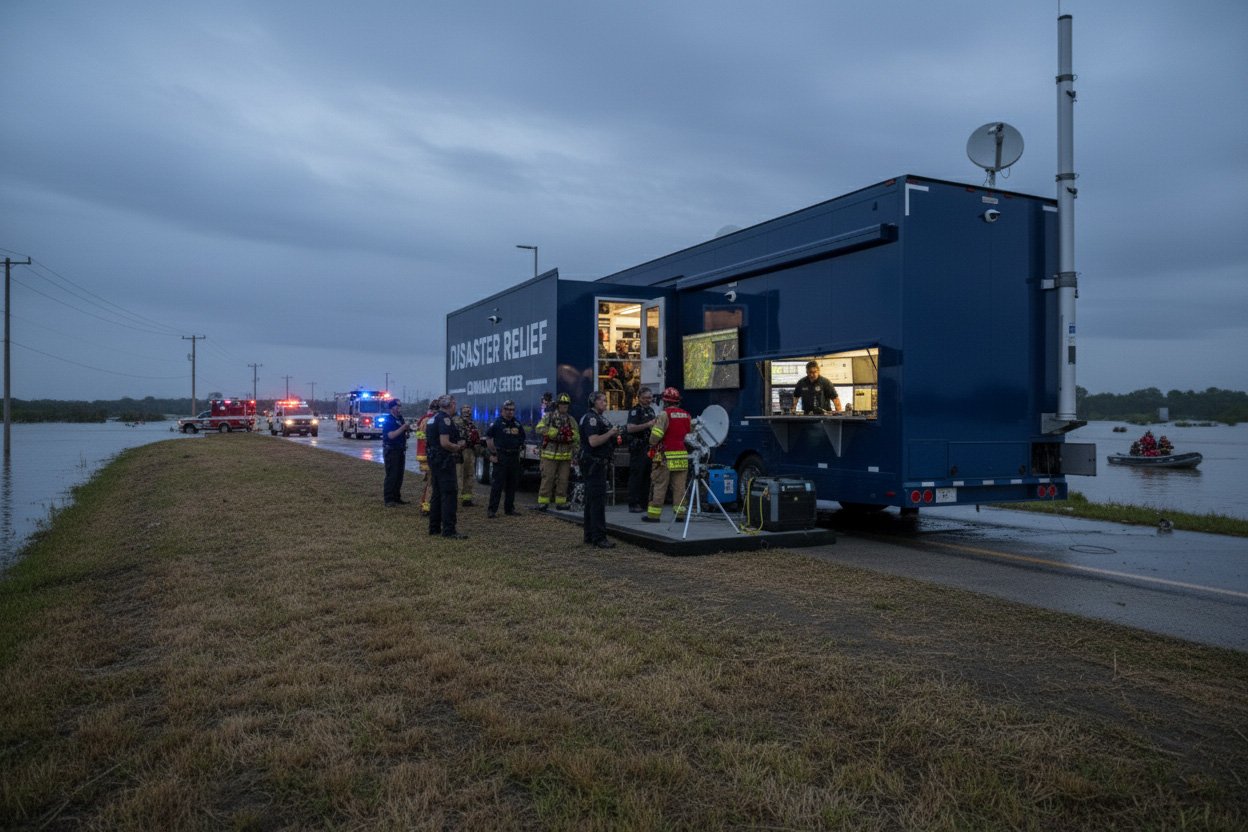
When natural disasters strike, chaos and disruption follow. Traditional communication networks collapse, mobility becomes restricted, and...
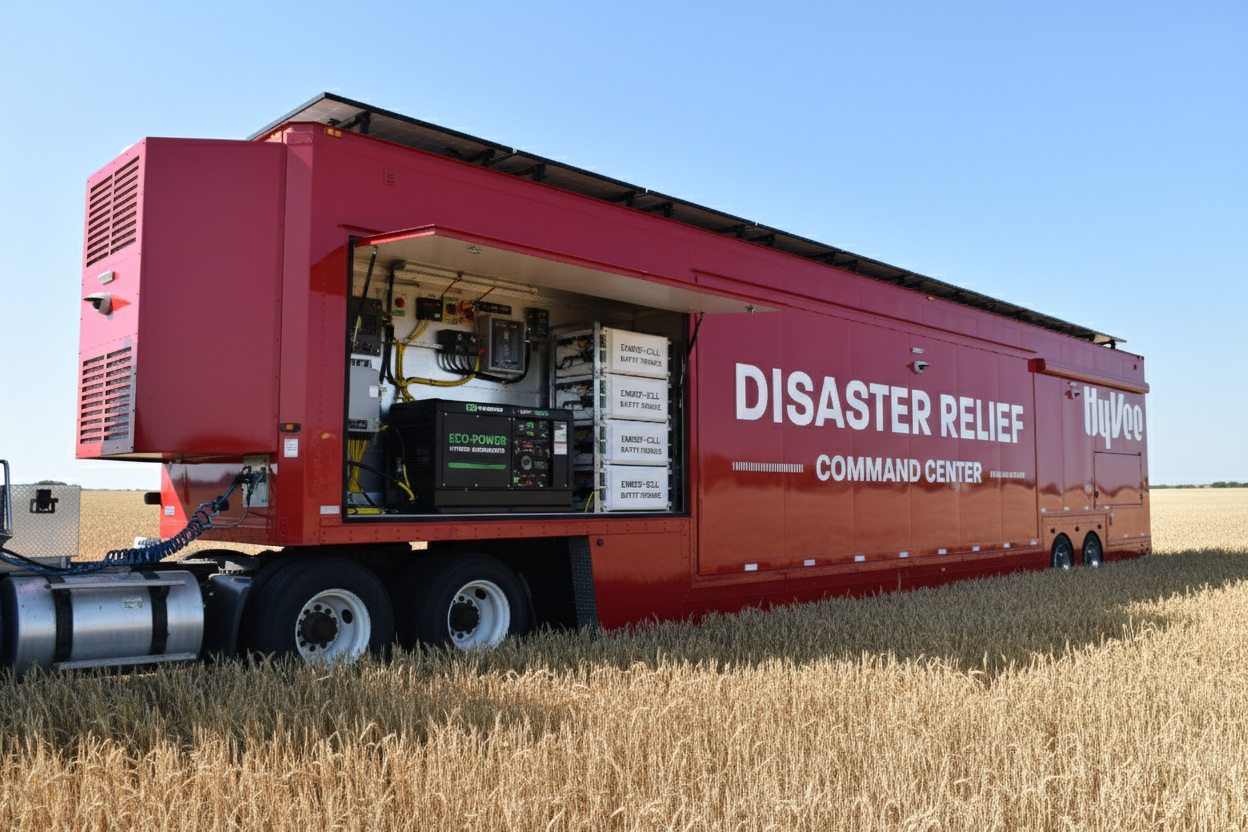
In an era where rapid-response capabilities are increasingly vital, the investment in a mobile command center (MCC) has become more than just a...
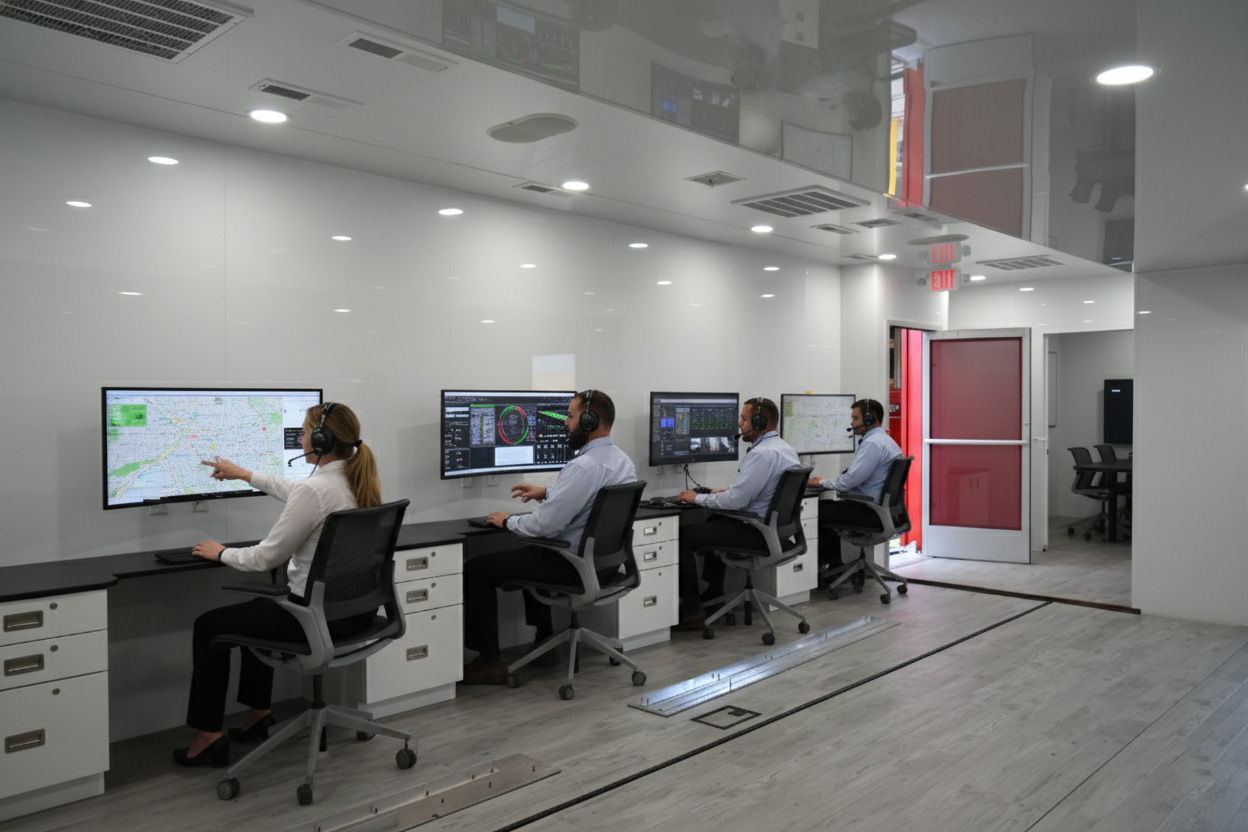
Mobile Command Units are no longer just trucks with radios, but they are advanced mobile hubs where audio-visual (AV) technology and collaboration...